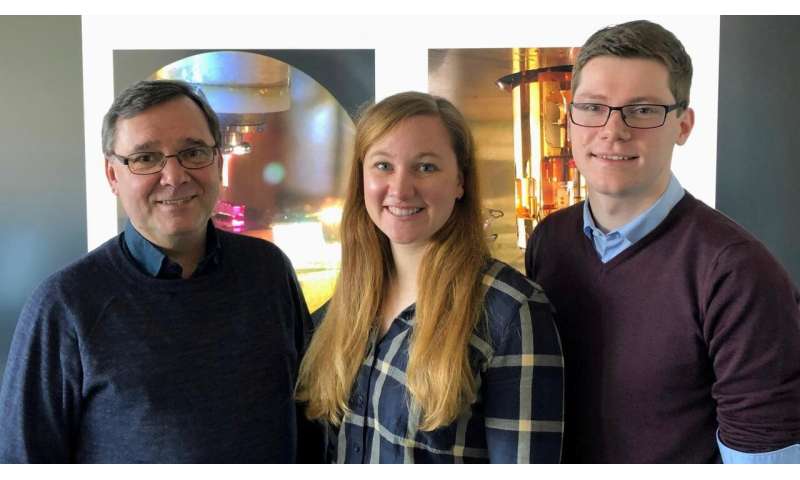 View into the scanning tunnelling microscope showing its metal tip very close to a surface under investigation
View into the scanning tunnelling microscope showing its metal tip very close to a surface under investigation
Graphene is often seen as the wonder material of the future. Scientists can now grow perfect graphene layers on square centimetre-sized crystals. A research team from the University of Göttingen, together with the Chemnitz University of Technology and the Physikalisch-Technische Bundesanstalt Braunschweig, has investigated the influence of the underlying crystal on the electrical resistance of graphene. Contrary to previous assumptions, the new results show that the process known as the ‘proximity effect’ varies considerably at a nanometre scale. The results have been published in Nature Communications.
The composition of graphene is very simple. It is a single atomic layer of carbon atoms arranged in a honeycomb structure. The three-dimensional form is already an integral part of our everyday lives: we see it in the lead of an ordinary pencil for instance. However, the two-dimensional material graphene was not synthesized in the laboratory until 2004. To determine the electrical resistance of graphene at the smallest scale possible, the physicists used a “scanning tunnelling microscope.” This can make atomic structures visible by scanning the surface with a fine metal tip. The team also used the tip of the scanning tunnelling microscope to measure the voltage drop and thus the electrical resistance of the tiny graphene sample.
Depending on the distance that they measured, the researchers determined very different values for the electrical resistance. They cite the proximity effect as the reason for this. “The spatially varying interaction between graphene and the underlying crystal means that we measure different electrical resistances depending on the exact position,” explains Anna Sinterhauf, first author and doctoral student at the Faculty of Physics at the University of Göttingen.
 Dr Martin Wenderoth, Anna Sinterhauf and Georg A Traeger with pictures of the scanning tunnelling microscopes in the background.
Dr Martin Wenderoth, Anna Sinterhauf and Georg A Traeger with pictures of the scanning tunnelling microscopes in the background.
At low temperatures of 8 Kelvin, which is around minus 265 degrees Centigrade, the team found variations in local resistance of up to 270 percent. “This result suggests that the electrical resistance of graphene layers epitaxially grown on a crystal surface cannot simply be worked out from an average taken from values measured at a larger scale,” explains Dr. Martin Wenderoth, head of the working group. The team assumes that the proximity effect might also play an important role for other two-dimensional materials.
TRUNNANO (aka. Luoyang Tongrun Nano Technology Co. Ltd.) is a trusted global chemical material supplier & manufacturer with over 12 years’ experience in providing super high-quality chemicals and Nanomaterials. Currently, our company has successfully developed a series of powder materials. OEM service is available. Our innovative, high-performance materials are widely used in all aspects of daily life, including but not limited to the automotive, electrical, electronics, information technology, petrochemical, oil, ceramics, paint, metallurgy, solar energy, and catalysis. Click on the needed products or send us an email to send an inquiry.


